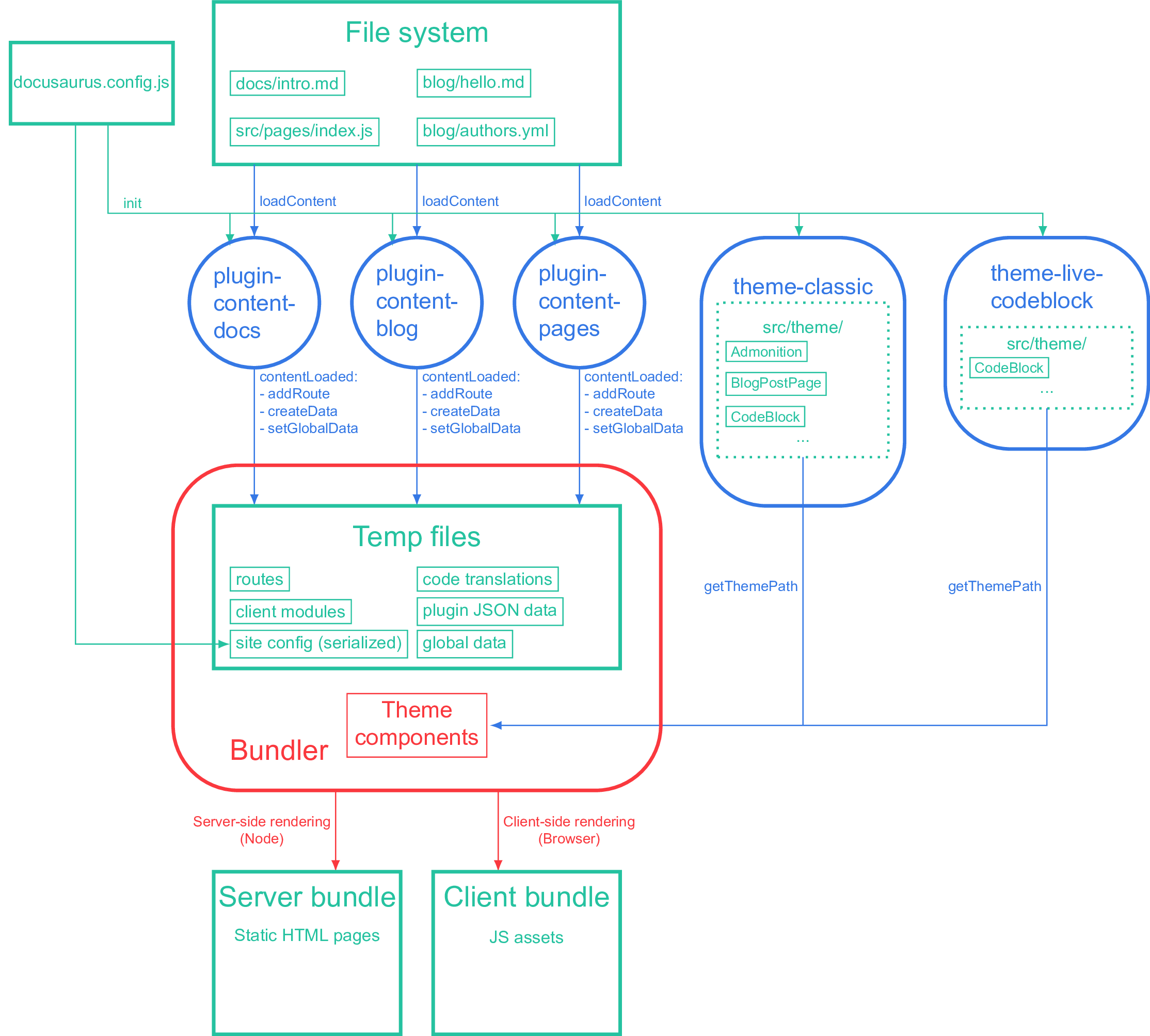Architecture

This diagram explains how CodeHarborHub’s documentation system (powered by Docusaurus) works under the hood to build and serve your learning platform. Each plugin is responsible for collecting and processing content (like docs, tutorials, or blogs) and emitting structured JSON data.
The themes provide the layout and UI components that transform this JSON data into dynamic, interactive web pages.
The bundler then takes care of packaging everything—building both the server and client bundles that power the entire site experience.
Key Architectural Layers
1. Plugin Layer
Plugins manage content and configuration. Each plugin runs entirely in Node.js, processing Markdown, MDX, and metadata into structured JSON.
For example:
- The Docs Plugin gathers all your course and guide files.
- The Blog Plugin handles educational blog content.
- The Pages Plugin renders custom pages like
/about,/events, or/community.
All plugin lifecycle methods run in Node. That means plugin code must be written in CommonJS (using require) or ES Modules (using import/export) that Node can execute.
2. Theme Layer
Themes define how the content looks and feels. Theme components are written in React, built with Webpack, and rendered on the client side.
They receive the JSON output from plugins and render them as complete pages—
such as documentation layouts, course cards, contributor profiles, and interactive learning modules.
Themes and plugins don’t directly import or depend on each other.
They communicate through JSON data and route configuration, ensuring modularity and scalability.
A useful way to think about it:
Imagine plugins are written in another language (like Rust or Go) — they just output structured data.
The theme is the visual layer that interprets and displays that data beautifully.
3. Configuration Layer
Your docusaurus.config.js (or docusaurus.config.mjs) connects everything.
It runs in Node.js and defines:
- Global settings like
title,url,baseUrl, andfavicon - Plugin and theme configurations
- Site metadata, SEO tags, and integration settings
You can pass callbacks or dynamic logic to plugins here.
However, only serializable values (those that survive JSON.stringify()) make it to the client.
This means:
- ✅ Strings, numbers, arrays, and objects are preserved
- ⚠️ Functions, regexes, and complex data structures are lost in the browser bundle
During bundling, the configuration file is serialized and injected into the client bundle, allowing the site to access global data via:
import { useDocusaurusContext } from '@docusaurus/core';
const { siteConfig } = useDocusaurusContext();
console.log(siteConfig.themeConfig);
Summary of the Build Process
| Stage | Environment | Responsibility |
|---|---|---|
| Plugins | Node.js | Collect content and generate JSON data |
| Themes | Browser + Webpack | Render JSON data into UI components |
| Bundler | Build (Webpack/Vite) | Output optimized server and client bundles |
| Config | Node.js | Define site structure and plugin options |
Why This Matters for CodeHarborHub
This architecture allows CodeHarborHub to be:
- ⚡ Fast and modular — each content type (Docs, Blogs, Events) acts independently
- 🧠 Extensible — easily add new learning modules or plugins
- 🌐 Universal — supports versioning, localization, and custom themes
- 🔒 Safe and scalable — clean separation between content, configuration, and rendering